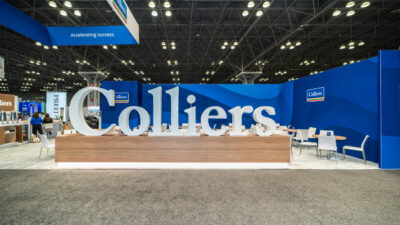Downtown Brooklyn’s retail corridor is one of the most expensive in the borough, exceeding the cost per square foot (PSF) of Williamsburg’s widely popular and hip Bedford Avenue. Downtown Brooklyn started as the apple of New York’s eye in the heyday of retail, but has nonetheless experienced its fair share of rough times.
Once the million-mile mall for the working-class consumer, downtown Brooklyn’s central shopping district was anchored by locally-owned shops and behemoth brands like Macy’s and Abraham & Straus. Widely known as one of Brooklyn’s retail pioneers, A&S opened its first store in 1928 at the corners of Fulton and Pearl streets. At the height of the brand’s popularity and wealth, the company’s flagship store occupied 841,000-square-feet in Brooklyn’s Fulton Street Mall.
Today, that same space is home to a wide variety of food anchors from Shake Shack to Hill Country Barbecue and yes, even Burger King, proving that consumer tastes have changed. Creating a sense of place, especially in urban markets, has become one of the top priorities for retailers as they lean toward tenants that live and breathe experiential interactions. Food halls are the latest concept to claim their stake in retail marketplaces, as well as street-level office complexes and luxury dwellings.
And after years of uncertainty about its future, the Fulton Street Mall is undergoing a renaissance. The pedestrian mall runs along Fulton Street between Flatbush Avenue and Adam Street, its curb appeal is helped by a limit imposed on vehicular traffic to commercial and local deliveries and it boasts proximity to transportation hubs like Metrotech and Atlantic Avenue Terminal. The area is recognized as the thirty-fifth most walkable neighborhood in NYC with direct access to walkways and an ample supply of CitiBike stations.
Together with its sister districts on Atlantic and Flatbush Avenues, Fulton Street has seen a steady increase of $100+ PSF over the last decade. This increase is mainly due to the boom in residential construction spurred by developers after a city rezoning in 2004 that unwittingly aided in the conversion of prime office space into luxury rentals and condominiums. A little more than a decade later, downtown Brooklyn’s retail corridor has become the priciest commercial real estate strip in the borough.
The Real Estate Board of New York suggests the jump in value was a direct result from the launch of City Point, the largest food, shopping and entertainment destination in the borough. City Point is a mixed-use space featuring the Alamo Drafthouse, Target and Century 21 as well as 50+ floors of condos. The development also houses DeKalb Market Hall food and entertainment center as well as Trader Joe’s, as its anchor grocer.
Brooklyn is rapidly developing a reputation as a one-stop borough that supports work, living and play opportunities for its 2.6 million (and counting) residents. From a restaurant boom in the northern regions of Greenpoint and Williamsburg to co-working expansions in the east, the sprawl is moving inward and upward reshaping the borough. Gentrification is a bittersweet movement, as it comes with the cost of shifting an area’s demographics, boosting median income rates and some may say draining the color and vibrancy that makes a place like Brooklyn unique.
As if proving the point, Whole Foods and Apple have both announced the grand opening of an outpost on Ashland Place. Ashland Place is one of many mixed-use spaces popping up on the border of downtown Brooklyn and Fort Greene near the Brooklyn Academy of Music (BAM). This location will be the first for Whole Foods’ 365 branded stores and the second Brooklyn location for Apple.
Anjee continues to be an insatiable enthusiast of all things retail. She’s a student of culture with a pulse on future shoppers and the fleeting trends constantly changing the retail landscape … driving retailers, landlords and developers crazy!

 Anjee Solanki
Anjee Solanki
 Nicole Larson
Nicole Larson
